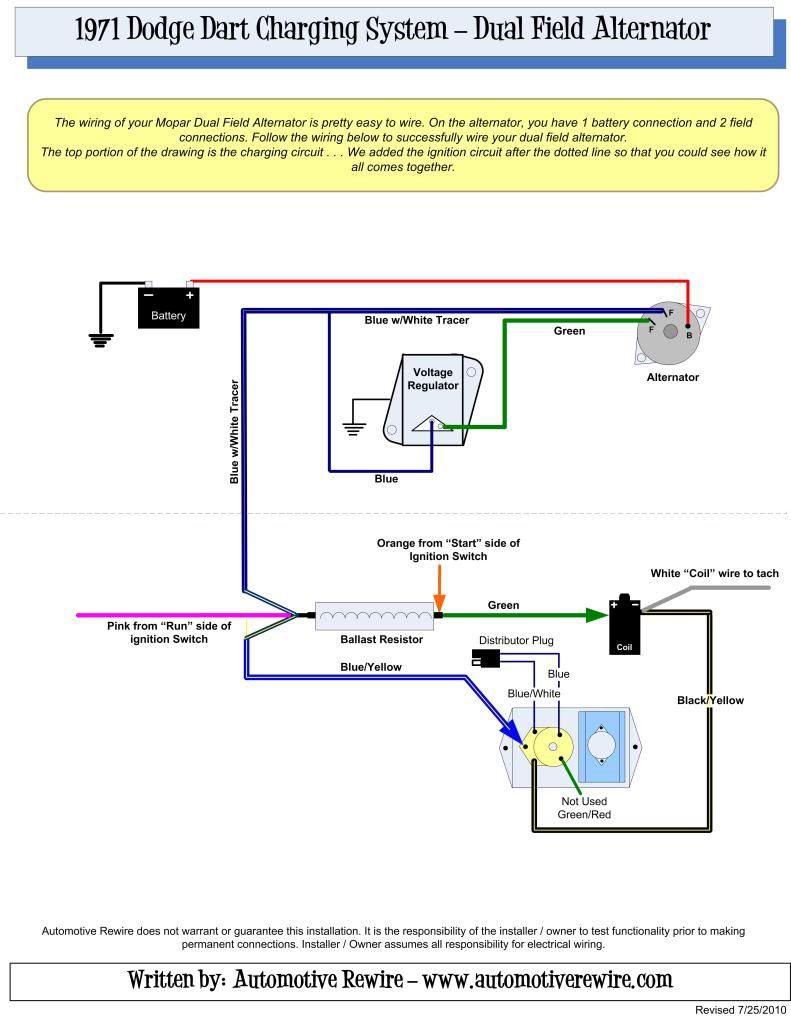"The deal" on the dual ballast
In the early days of Mopar breakerless ignition, the second section of the ballast (4 terminal ballast) was part of the power supply TO the ignition box. This was later re-designed and the ballast then went back to a 2 terminal ballast
If you compare the diagrams with the 4 pin ECU and 2 pin ballast, you will find that the 2 pin setup for the newer ECU is wired EXACTLY like the old "points" system
IN FACT you can toss you points dist. in the trunk for a spare. If the ECU system ever quits (and it's not a bad ballast or bad coil) all you need to do is slap your old distributor back in, unplug the ECU connector, and hook the old dist. wire back up to the coil.
You can not tell by looking (always) if an ECU is 4 pin (2 terminal ballast) or 5 pin (4 terminal ballast) because some boxes HAVE all 5 pins.
MOST boxes you are going to "run into" nowadays, and probably ALL new boxes are going to be 4 pin box / 2 pin ballast
=============================
ON YOUR VR conversion. I've written about this a lot. VOLTAGE DROP to the VR ign terminal is a big deal, is the probably main cause of over voltage to the battery.
PLEASE take the time to check, ...............easy
Turn the key to run, engine stopped. Hook your meter probe to "as close as you can get" to the VR IGN terminal. This might be your ballast, or the field terminal on the alternator.
Hook the other probe to battery POSITIVE.
You are hoping for a very low reading, the lower the better. Over .3V (3/10 of one volt) means you need to improve things.
The "path" for this and probable drop is......
Battery.......starter relay.........fuse link........through bulkhead (red).........to ammeter.......through ammeter and out black........to welded splice.........to ignition switch connector.......through the switch........out ignition switch connector on the blue "run" (ign 1) and back out through the bulkhead, .......to the ignition, the field, and the regulator
MOST PROBABLE are poor connections in the bulkhead connector, ignition switch connector and switch, and ammeter. Least probable, but has and can happen, is failure of the welded splice.
HOW to fix........Easiest, in some respects, if the charging wire part of the bulkhead is OK, is to add a relay to run the ignition and charging system. Otherwise, fix the poor connections wherever they are. As some ignition switches are getting more difficult to obtain, this might be a trick.
==================================
GROUNDING. Make absolutely sure the VR and the ECU is grounded. Scrape paint off the back of the flanges, and around the firewall bolt holes. Use star lock washers. they MUST be tight.
CHECKING grounding. After you get things wired and running, and confirm it's charging properly, warm it up and get the battery "normalized." Then make this check, first with all accessories off, and again with lights, heater, etc powered on
With engine warm,and running fast idle to simulate "low cruise," stab one meter probe into the battery NEG post. Stab the remaining probe into the VR mounting flange. You are hoping for a very low reading, zero is perfect. More than .2--.3V means you need to improve grounding.

















